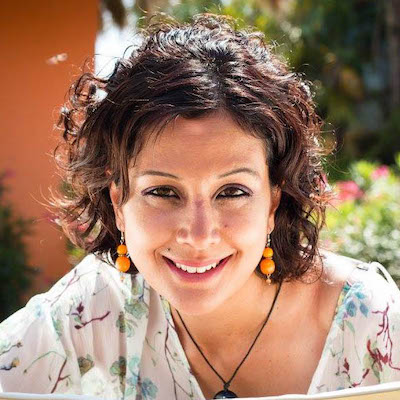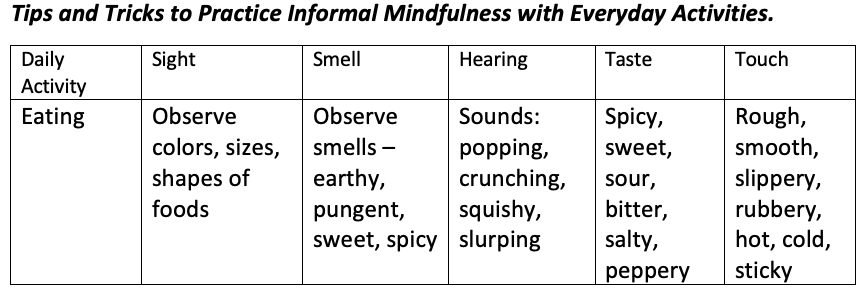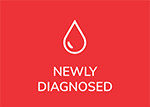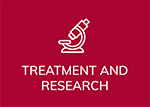 By Farahana Surya Namskar
By Farahana Surya Namskar
“This is the real secret of life – to be completely engaged with what you are doing in the here and now. And instead of calling it work, realize it is play.” Alan Watts
The uncertainties of life can be daunting and managing the unpredictability of our everyday is never easy. Is there any real way to prepare ourselves for life’s most random and unexpected situations? Whether it is the diagnosis of a terminal illness, the sudden death of a loved one, the end of a marriage, getting fired from a job, or the impact of a worldwide epidemic such as COVID-19, the uncertainties of life are endless. The truth of life is that the past is behind us and the future is yet to come. The only certainty we can rely on, is this present moment; right here, right now. Yet for most people, so much time is spent fixating on the past or obsessing over the unknown future. Depression, stress, and anxiety are an ongoing experience in the lives of millions of Americans. So how do we heal from these experiences? How do we free ourselves from the pain and disappointment of the past? How do we detach from ourselves, from the stories and narratives of the worst case “what if” scenarios of the future?
Mindfulness is an essential tool that can support us to help navigate the thoughts we create in the mind, and the relationship we have with these thoughts. Mindfulness is the awareness of the present moment. It is the intentional awareness of the present moment experience that is unfolding right now. The most crucial part about mindfulness is that we bring awareness to whatever is unfolding right now, without judgment. Mindfulness is a practice that can be cultivated in two ways:
We can become aware of the present moment through formal practices, as well as informal practices. Formal practices involve taking time out of our busy lives and becoming still. Bringing awareness to the present moment through meditation is an example of formal mindfulness. During a meditation, we can pay attention to our breath, and notice the flow of the breath on purpose. We can notice if our breath is fast or slow, deep or shallow.
Informal practices invite us to embody the awareness using our 5 senses. We can observe everyday activities when we are engaging in them, such as brushing our teeth, eating our food, going for a walk and washing the dishes.
Beginning to cultivate a mindfulness practice has numerous health benefits. We notice that the more mindful we become, the less stress and anxiety we feel because we detach from the obsessive thoughts about the past or the future. We become more grounded in the present moment and learn to appreciate and enjoy right now. We also notice improved attention and focus in the things we do. We become better engaged in this moment and therefore, we can better relate to present-moment experiences. For example, we engage more effectively in conversations with family members, work colleagues and friends. Mindfulness also helps us to become more self-aware, and to notice triggers that cause us to become more reactive. Mindfulness invites us to become curious about our triggers and notice situations when they are just about to become unruly. Applying mindfulness into the present-moment experience when we do become triggered helps prevent reactive behavior and instead, we train our mind to initiate more responsive behavior.
As we pay attention more, we are also able to take in, process and retain more information; thus, assisting us with improved memory.
Our deliberate attention in the present moment helps reduce the urge to multitask in this busy world. We focus better on the road when driving. We learn to minimize stress caused by unruly drivers who cut us off on the road, reduce tension and reactivity when we are slowed down because of traffic and learn to be more compassionate and patient when stuck in long grocery lines. We can become more aware of opportunities to just pause, be and reflect, rather than function as autopilot robots who are constantly just doing and wanting things to get done immediately.
Tips and Tricks to Practice Formal Mindfulness
The following strategies can be implemented as part of your regular daily routine to help alleviate stress and anxiety. The intention is to remind us all to enjoy right now and everything that is going on in this moment.
10 Breath Cycle: This can be done either sitting on a chair, or floor or lying down. Take a deep breath in through your nose and then slowly release by breathing out through your mouth. Do this, 10 times. Notice how your body feels. Do you feel more relaxed the more breaths you take? Notice any thoughts that arise. If you become distracted by thoughts, or sounds, or sensations in the body, acknowledge through awareness what has arisen in that moment, and then gently bring your attention back to your breath. Complete 10 breath cycles. (1 breath cycle = 1 inhale followed by 1 exhale)
Starfish Breathing – Start with your left hand. Using your right index finger, trace each finger on your left hand starting from your pinky finger going up and down. As you trace up each finger, breath in, and as you trace down each finger, you breathe out. Notice how you feel as you engage the breath with the physical movement of your finger tracing up and down your opposite hand. The pace at which you trace up and down the fingers can help you really relax the flow of your breath. Notice what calmness feels like and where in the body you most feel this sense of calmness.
Belly breathing – This can be done either sitting on a chair, the floor or lying down on a comfortable surface. Place one hand on your heart and the other on your belly. Slowly begin to close your eyes and bring your attention to your breath. Notice the flow of your breath and how your hand on your belly moves, rises and falls as you breath in and out. Also notice your heartbeat. Is it fast or slow? As you relax more, what happens to your heartbeat? What happens to your breath? Imagine that with each breath you take in through your nose, you are relaxing more and as you breath out, you are releasing all accumulated stress and burdens that you wish to let go.

Find other activities in your daily life that you can pay more attention to using your 5 senses.
Beginning your own mindfulness journey only requires an open heart, a curious mind, and a willingness to shift and make gradual changes to the life that has been filled with stress and anxiety. Remember, you have the power to make this moment count; so live this moment on purpose, with curiosity and have fun.
I invite you in this moment to ask yourself, is your mind full or will you commit this moment to being mindful?
Farahana Surya Namaskar is a published author, speaker and mindfulness coach based in Dallas, TX. She brings the teachings of mindfulness and meditation to children and adults. She believes in the power to change our life by changing the conditioning, stories and narratives of the mind. Farahana has worked with children and adults in school and classroom settings. She has also worked with older adults and caregivers in hospital and therapy settings. She the author of Doing and Being, a children’s book that teaches children to use their breath and five senses to anchor them in the present moment. Her inspiration to live life fully in the present moment is her 8 year old son, Ilyaan.
Originally published in The CLL Society Tribune Q2 2020.

















